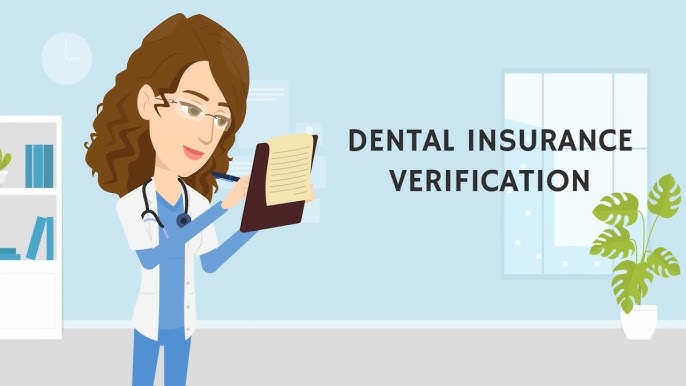Dental offices face increasing pressure to deliver efficient care while managing administrative tasks like insurance processing. One of the most critical yet time-consuming aspects is dental insurance verification. Without accurate verification, practices risk claim denials, billing errors, and dissatisfied patients. As dental insurance policies become more complex, having a streamlined and effective verification process is more essential than ever.
In this article, we’ll explore what dental insurance verification entails, why it’s important, and how your dental practice can improve this process to save time, reduce errors, and enhance the patient experience.
What Is Dental Insurance Verification?
Dental insurance verification is the process of confirming a patient’s insurance coverage details before their appointment. This includes checking:
- Coverage start and end dates
- Eligibility for specific procedures
- Annual maximums and deductibles
- Copays and coinsurance percentages
- Waiting periods and frequency limitations
- Out-of-network vs. in-network benefits
Verifying insurance allows dental practices to provide patients with accurate treatment estimates and reduces the likelihood of surprise bills or unpaid claims.
Why Dental Insurance Verification Matters
1. Prevents Claim Denials and Delays
Incorrect or outdated insurance information can lead to claim rejections. Verifying dental insurance before treatment helps practices catch issues early—before services are rendered. This minimizes back-and-forth with insurance companies and ensures faster reimbursement.
2. Improves Patient Trust and Transparency
Patients want to know upfront what their insurance covers and what out-of-pocket costs they’ll incur. Dental insurance verification gives your front desk team the information they need to educate patients, reducing surprises and building trust.
3. Enhances Practice Revenue Cycle Management
Verification supports cleaner claims, fewer denials, and timely payments—all essential to a healthy cash flow. By understanding each patient’s insurance details ahead of time, your team can bill accurately and collect balances more efficiently.
4. Boosts Staff Productivity
Manually verifying insurance during or after a patient visit can lead to bottlenecks. Automating or outsourcing this task allows front desk staff to focus on patient care and scheduling.
Steps in the Dental Insurance Verification Process
While the steps may vary depending on your practice and tools, a standard dental insurance verification workflow typically includes:
1. Collecting Patient Information Early
Gather insurance details during scheduling. This includes the insurance company, group and member ID numbers, and the subscriber’s name and date of birth.
2. Contacting the Insurance Provider
Verification can be done via online portals, phone calls, or third-party tools. The goal is to get a full breakdown of benefits, including specific dental procedure coverage.
3. Documenting Benefits and Eligibility
Once verified, the information should be logged in the patient’s file and dental software. It should be accessible to both the front desk and treatment coordinators.
4. Communicating with the Patient
Share coverage details and expected out-of-pocket costs before the visit. This is an opportunity to answer questions and avoid billing confusion later.
Common Challenges in Dental Insurance Verification
Despite its importance, many dental offices struggle with verification due to:
- Time constraints: Verifying insurance for multiple patients is time-consuming.
- Changing policies: Insurance plans change frequently, and benefits can vary even within the same insurer.
- Lack of standardization: Each insurer has different methods and terminology.
- Errors in communication: Misunderstandings over phone calls with insurance reps can lead to incorrect verification.
These issues can lead to revenue leakage and patient dissatisfaction if not addressed.
Tips to Improve Your Dental Insurance Verification Process
Here are some strategies to make your verification process more efficient and accurate:
1. Start Early
Verify insurance at least 48-72 hours before the patient’s appointment. This gives your team time to resolve any issues before the visit.
2. Use Verification Software or Services
Many dental practice management systems integrate with insurance verification tools. These platforms automate the process, provide real-time eligibility data, and reduce manual workload.
3. Train Your Front Desk Team
Provide regular training on insurance terminology, verification procedures, and documentation. An informed staff is more likely to catch discrepancies and explain coverage clearly to patients.
4. Create a Verification Checklist
Standardize the process with a checklist to ensure no detail is missed—like annual max, frequency limits, or pre-authorizations required.
5. Outsource to Dental Insurance Verification Experts
If your practice is overwhelmed with administrative work, consider outsourcing to a dedicated service. These experts focus solely on dental insurance verification, offering high accuracy and freeing up your staff’s time.
The Future of Dental Insurance Verification
As technology continues to advance, the future of dental insurance verification lies in automation and integration. AI-powered tools and APIs can now pull insurance data instantly from major carriers, reducing human error and streamlining workflows.
Additionally, with the rise of patient portals and mobile apps, practices can encourage patients to upload their insurance information directly. This not only saves time but also increases accuracy.
The key takeaway is this: practices that adopt modern verification methods will be better positioned to deliver a seamless patient experience and maintain financial health.
Conclusion
Dental insurance verification may seem like a behind-the-scenes task, but its impact on your practice’s success is undeniable. From ensuring accurate billing to improving patient trust, a well-run verification process is essential for any dental office.
Whether you choose to automate, train in-house staff, or outsource to experts, the goal is the same—clear, timely, and accurate insurance information that supports both your practice and your patients.
Investing in better dental insurance verification processes is more than an administrative upgrade; it’s a strategic move that directly contributes to operational excellence and long-term growth.































